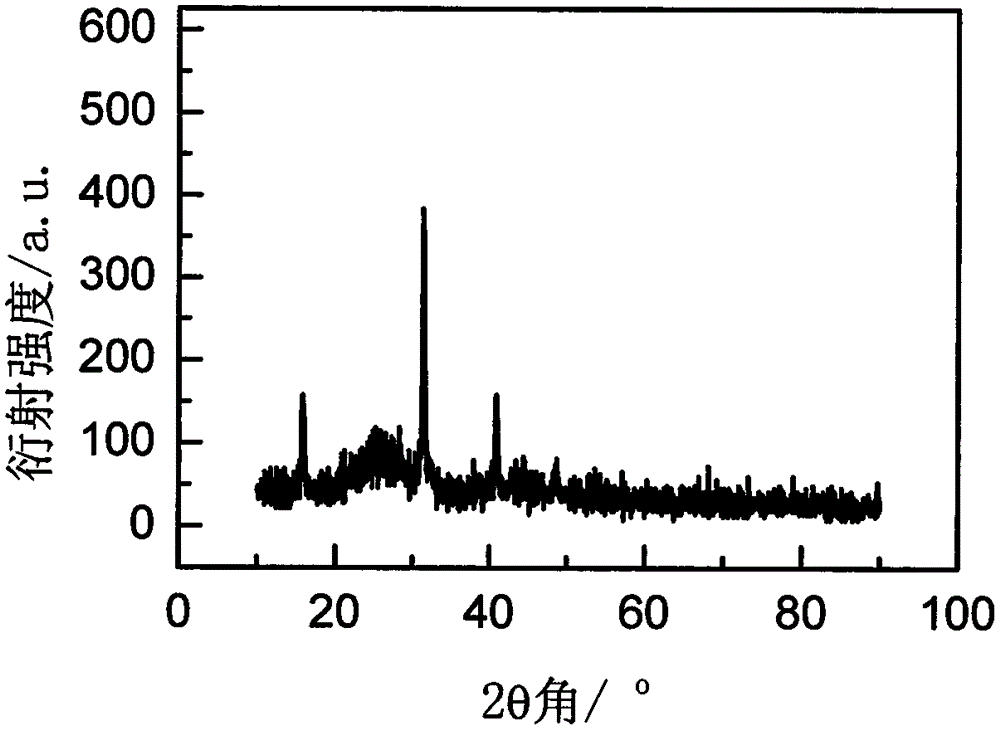Li3YCl6 glass ceramics doped with rare earth ions and preparation method of Li3YCl6 glass ceramics
A technology of glass-ceramics and rare earth ions, which is applied in the field of glass-ceramics doped with rare earth ions, can solve the problems of affecting the output of up-conversion luminescence and poor physical and chemical properties, and achieve excellent up-conversion performance, good mechanical properties, and blue-violet light transmission. high rate effect
- Summary
- Abstract
- Description
- Claims
- Application Information
AI Technical Summary
Problems solved by technology
Method used
Image
Examples
Embodiment 1
[0020] T m 3+ , Yb 3+ Doped with Li 3 YCl 6 The molar percentage composition of glass ceramics is: SiO 2 87.8mol%, Li 3 YCl 6 10mol%, TmCl 3 0.2mol%, YbCl 3 2mol%, the process for preparing glass-ceramics of the above composition is as follows:
[0021] (1) Weigh yttrium acetate, lithium acetate, ytterbium acetate, and thulium acetate, wherein the parts of yttrium acetate and lithium acetate are respectively formed in molar percentage by Li 3 YCl 6 The mole percentage content weighs, and the part of ytterbium acetate and thulium acetate is composed of YbCl in the same mole percentage as above. 3 , TmCl 3 Weigh the molar percentage content, dissolve the above-mentioned acetate in deionized water to form an acetate solution, add trichloroacetic acid to the acetate solution to obtain a transparent mixed solution, wherein trichloroacetic acid and acetate solution The molar ratio of the sum of metal ions is 3:1;
[0022] (2) SiO in the same molar percentage composition ...
Embodiment 2
[0027] Er 3+ , Yb 3+ Doped with Li 3 YCl 6 The molar percentage composition of glass ceramics is: SiO 2 89mol%, Li 3 YCl 6 8mol%, ErCl 3 0.5mol%, YbCl 3 2.5mol%, after the preparation and heat treatment process identical with embodiment 1, obtain transparent rare earth ion Er 3+ , Yb 3+ Doped Li 3 YCl 6 Glass-ceramic. The glass-ceramic was measured with a TRIAX550 fluorescence spectrometer, under the excitation condition of a 970nm laser, strong green and red upconversion luminescence were observed.
Embodiment 3
[0029] Er 3+ 、Tm 3+ , Yb 3+ Doped with Li 3 YCl 6 The molar percentage composition of glass ceramics is: SiO 2 88mol%, Li 3 YCl 6 9mol%, ErCl 3 0.1mol%, TmCl 3 0.1mol%, YbCl 3 2.8mol%, after the preparation and heat treatment process identical with embodiment 1, obtain transparent rare earth ion Er 3+ 、Tm 3+ , Yb 3+ Doped Li 3 YCl 6 Glass-ceramic. The glass-ceramic was measured with a TRIAX550 fluorescence spectrometer, under the excitation condition of a 970nm laser, strong blue, green and red upconversion luminescence were observed.
PUM
 Login to View More
Login to View More Abstract
Description
Claims
Application Information
 Login to View More
Login to View More - R&D
- Intellectual Property
- Life Sciences
- Materials
- Tech Scout
- Unparalleled Data Quality
- Higher Quality Content
- 60% Fewer Hallucinations
Browse by: Latest US Patents, China's latest patents, Technical Efficacy Thesaurus, Application Domain, Technology Topic, Popular Technical Reports.
© 2025 PatSnap. All rights reserved.Legal|Privacy policy|Modern Slavery Act Transparency Statement|Sitemap|About US| Contact US: help@patsnap.com



